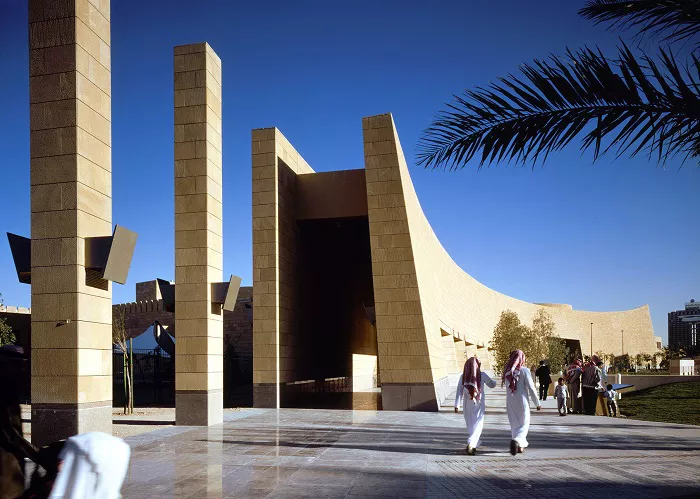National museums across the Arab world are increasingly becoming vital institutions that preserve the region’s rich cultural heritage while shaping contemporary identities. Serving as repositories of history and innovation, these museums not only safeguard the fascinating stories and achievements of ancient civilizations but also inspire new forms of creativity and cultural exchange.
Spanning thousands of years, the Arab world has been the cradle of some of the most influential civilizations in history. From the Sumerians and Babylonians to the Egyptians, Phoenicians, Nabateans, and Islamic empires, their legacies in language, trade, architecture, sciences, medicine, and the arts continue to shape modern life. The importance of national museums, therefore, extends beyond the preservation of artifacts; they also serve as dynamic spaces where culture is celebrated, explored, and reinterpreted.
A prime example of this cultural transformation is the highly anticipated opening of the Grand Egyptian Museum in July. Located just a mile north of the Great Pyramids of Giza, this institution is set to become the largest museum in the world dedicated to a single civilization. With over 100,000 artifacts, many of which have never been displayed publicly, the museum will provide an unparalleled narrative of Egypt’s 7,000-year history. Beyond the galleries, the museum’s design includes serene outdoor gardens, a children’s museum, and a variety of dining and shopping experiences, offering visitors a complete cultural experience.
Among the treasures on display will be the colossal Hanging Obelisk, a 3,200-year-old statue of Pharaoh Ramesses II, as well as the Victory Stele of King Merneptah and statues of a Ptolemaic king and queen—each emblematic of Egypt’s remarkable past.
Similarly, the Zayed National Museum in Abu Dhabi, slated to open this year, will pay tribute to the late Sheikh Zayed bin Sultan Al Nahyan, the founder of the UAE. Visitors will be able to explore the full spectrum of Emirati history, from the earliest human settlements in the region, dating back over 300,000 years, to the country’s modern-day achievements.
In Saudi Arabia, the National Museum of Saudi Arabia in Riyadh continues to grow as a significant cultural landmark, while other cities in the region, including Doha, Manama, and Muscat, have also established museums that celebrate their unique heritages.
The role of these museums is expanding beyond mere preservation. In fact, they are increasingly becoming economic engines. The Smithsonian Institution in Washington, for example, is a key driver of local tourism, research, and education. In the UAE, Louvre Abu Dhabi, which opened in 2017, has become a central element of the country’s cultural tourism strategy, attracting millions of visitors annually.
At the same time, museums in the MENA region continue to captivate global audiences. International institutions such as the British Museum in London, the Louvre in Paris, and the Metropolitan Museum of Art in New York house vast collections of art and artifacts from the Middle East and North Africa. In 2024, these institutions attracted millions of visitors, underscoring the global interest in the region’s historical and cultural treasures.
Despite this global engagement, many cities in the MENA region—rich with millennia of history—remain underrepresented in the international cultural landscape. Many significant artifacts are still scattered in foreign museums, while others remain overlooked, underexposed, or even undiscovered.
This underlines the importance of continued investment in national museums throughout the Arab world. Economically, they help to drive cultural tourism, support local industries, and create jobs. Culturally, they serve as platforms for celebrating and preserving regional heritage, while promoting civic pride. Historically, they act as custodians of collective memory, ensuring that the legacies of ancient civilizations are not lost to time but are presented in innovative and engaging ways.
For this to happen, governments in the MENA region must adopt a multifaceted approach, combining strategic vision with investment. Building world-class museum infrastructure is a starting point, but public-private partnerships should also be leveraged to attract sponsorship from corporations, philanthropists, and international cultural foundations.
A critical step forward could involve the establishment of national acquisition funds to enrich museum collections with significant local and regional artifacts. Additionally, creating repatriation units to recover key cultural items housed in foreign museums could help bring valuable pieces of heritage back to their places of origin.
Another potential avenue for progress is the creation of a regional museum alliance that fosters collaboration across national borders. Shared exhibitions, research initiatives, and the development of educational resources could help amplify the cultural voices of the Arab world on the global stage.
Beyond the physical spaces and collections, museums must also embrace technological innovation to enhance the visitor experience. Digital platforms, multilingual storytelling, and immersive exhibitions using emerging technologies can engage both local and international audiences, making the region’s cultural treasures more accessible than ever before.
Furthermore, digitizing collections to make them available online could broaden access and create global interest, ensuring that key artifacts reach a wider audience, regardless of geographic limitations.
As museums across the Arab world continue to evolve and expand, they play a crucial role in not just preserving the past but shaping the cultural future of the region. By investing in the growth and development of these institutions, the Arab world can amplify its cultural heritage, fostering a deeper understanding of its rich legacy while engaging a global audience eager to connect with the remarkable civilizations of the Middle East and North Africa.

